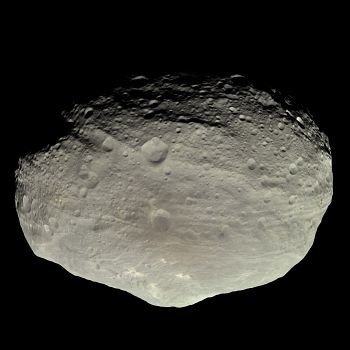Vesta (also known as 4 Vesta)

Image Source Image of Vesta taken by Dawn
Vesta (also known as 4 Vesta) with a mean diameter of 525 km (326 mi) is the second largest asteroid in the asteroid belt after Ceres. It is named after Vesta, the goddess of home and hearth from the Roman mythology. On 29 Mar 1807, the asteroid was discovered by German astronomer Heinrich Wilhelm Olbers.
The mass of Vesta is estimated to be 9% of the total mass of the asteroid belt. There are two large craters on the Southern hemisphere which were created one to two billion years ago. Numerous fragments were thrown out when the craters were formed. The debris fell to Earth as HED (howardite–eucrite–diogenite) meteorites. A lot has been known about Vesta by studying the meteorites.
It is the brightest asteroid that is visible from Earth. The orbit of Vesta around the Sun is 3.6 Earth years. Vesta's speed of rotation (5.342 h) is relatively fast for that of an asteroid. The density is lower than the four rocky planets and higher than most asteroids and all moons in the Solar System other than lo (moon of Jupiter). The surface area is about 800,000 square km. It is only slightly larger than 2 Pallas (third largest asteroid in the asteroid belt) in volume but is about 25% more massive.
Dawn, spacecraft from NASA entered Vesta's orbit on 16 Jul 2011 and left the orbit on 5 Sep 2012.
Source: Wikipedia
If you liked my post, then please give an Upvote and Resteem it or follow me, you will be thanked.